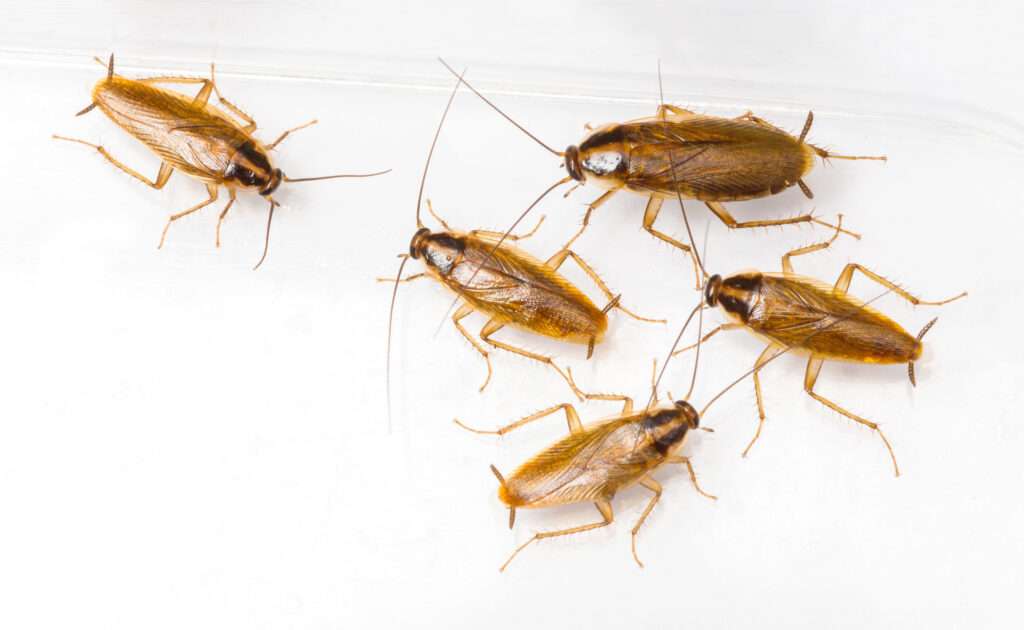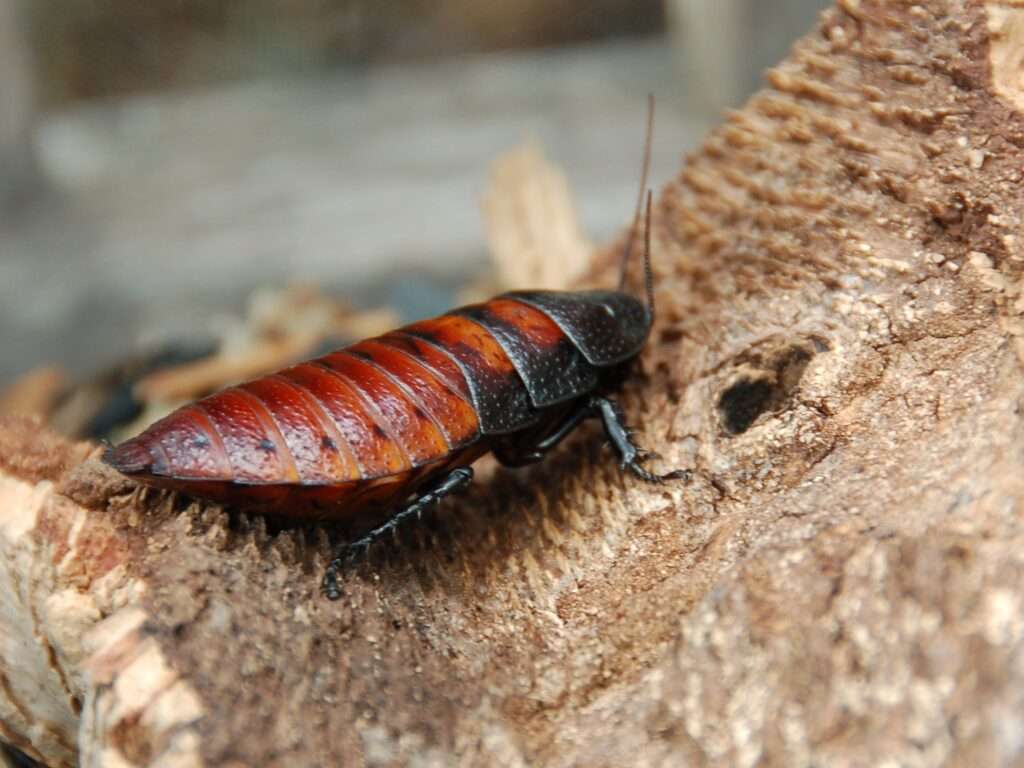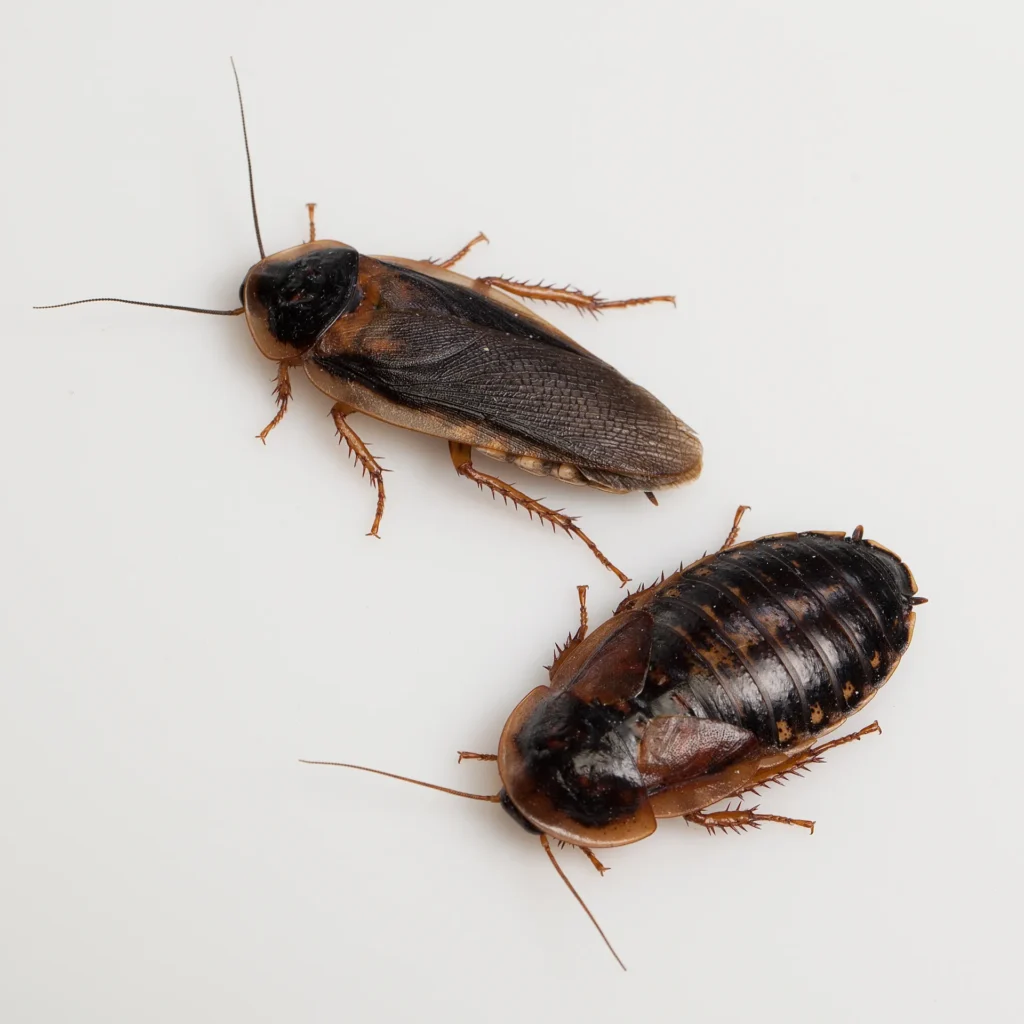
The croton bug or German cockroach (Blattella germanica) is a species of little cockroach that is normally between 1.1 and 1.6 cm (0.43 and 0.63 in) length. Its hue ranges from tan to almost black, and its pronotum bears two dark, fairly parallel stripes that extend from the head (back) to the wing’s top. B. germanica possesses wings, although it can hardly fly; yet, when agitated, it may glide. It is likely the most bothersome species of the few cockroaches that are household pests. Due to their close resemblance and potential for confusion by a casual observer, it and the Asian cockroach are very closely related.
Habitat
German cockroaches can be found in either tropical or temperate climates. They are only terrestrial and like warm, muggy weather. They live in a variety of environments, including taigas and chaparrals as well as particularly damp regions like rainforests and scrub woods. The most pervasive urban pests are German cockroaches, which are said to have come from Southeast Asia. All regions of the world, including North America, Australia, Africa, and the Oceanic Islands, have been exposed to them.
Description of the body
- Ectothermic creatures include German cockroaches.
Adults
- Adults weigh between 0.1 and 0.12 g and range in length from 12.7 to 15.88 cm (average 13.0 cm) (average 0.105 g). German cockroaches are typically monomorphic, oval-shaped, flat, and have long, spiky legs. They exhibit sexual dimorphism.
Males
- Males lack a tegmina, have a small and slender body, a tapering posterior abdomen, and visible terminal segments of the abdomen (leathery outer wings).

Females
- The posterior abdomen of females is rounder, they have a stouter build, and the tegmina covers the entire abdomen. All life stages of German cockroaches exhibit bilateral symmetry.
- German cockroaches have a light brown tint and two broad, parallel stripes across the length of their bodies on the dorsal side.
Nymph Cockroaches
- The shape of nymphal cockroaches is similar to that of adults, but they are smaller, darker (dark brown to black), have only one dorsal side stripe, and lack fully formed wings.
- Egg capsules are spherical and pale tan in color.
Lifespan
German cockroach males typically live between 100 and 150 days. Females typically live 190 to 200 days longer than males.
Feeding
Due to the buildup of trash and other debris, German cockroaches frequently live in or near human homes. They eat a vast variety of meals, including corpses of living things. They frequently consume things that belong to humans, particularly carbohydrates, sugar, seeds, grains, fat, and animal products. Glue, toothpaste, and soap have all been documented to be consumed by German cockroaches.
Importance in Humans Life
Positive Role
German cockroaches have no known beneficial benefits on humans’ economies.
Negative Role
German cockroaches’ negative secretions, which are produced when big colonies have accumulated, have economic significance for humans. Additionally, they may make human foods unpleasant. This can result in significant financial loss, particularly in regions of the world where food is expensive or in short supply. Numerous parasites, including bacteria, protozoans, and viruses that cause diseases in humans, are hosted by German cockroaches. Food poisoning, dysentery, and diarrhea in humans can be brought on by contaminated food and parasites.
Why is it not kept as a pet?
Do not judge a book by its cover. Although they are not pets, they are viewed as pests. They taint food and disperse illnesses.
Table





